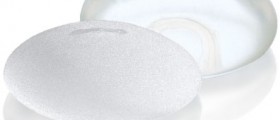
Breast Cysts Overview
Breast cysts are fluid-filled masses found in breast tissue. The exact cause why breast cysts develop is unknown, but they naturally tend to form triggered by aging and changing of breast tissue. Breast cysts may affect women pf any age but they most commonly develop in women aged between 35 and 55.
Breast cysts may develop as a single fluid-filled sac or in groups. Any part of the breast may be affected. However, the cysts are most frequently found in the upper half of the breast. Breast cysts may feel like movable, round lumps that vary in size. Before menstrual period breast cysts may increase in size and become sore or tender.
Breast cysts are benign and almost never turn into cancer. They also do not increase the risk of breast cancer.
Diagnosis of Breast Cysts
Breast cysts may sometimes be felt as a lump if they are large enough or may be discovered incidentally during breast examination or routine breast screening such as a mammogram or an ultrasound.
A mammogram can reveal presence of a solid mass which may be a cysts or a tumor. Breast ultrasound can help to determine whether this lump is fluid-filled or solid. If the mass is filled with fluid it indicates a breast cyst. Women younger than 35 generally have too dense breast tissue and are examined only with a breast ultrasound.
Treatment for Breast Cysts
Breast cysts often do not require any treatment as they usually resolve on their own. However, if the cyst is large and causes pain a doctor can drain it using fine needle aspiration. When the fluid is drawn out, the cyst usually disappears. The doctor will also examine the fluid drained from the cysts and if there appears to be blood the fluid will be sent for analysis to check for the presence of cancer.
Breast cysts often refill after fine needle aspiration and such cysts can be removed with a surgical biopsy. The procedure can be done under general or local anesthesia.
In case the laboratory test reveal cancerous cell the treatment will include chemotherapeutic drugs. Chemotherapy helps to stop cells from growing and multiplying in an uncontrolled manner. Chemotherapy also helps to relieve some of the symptoms. There are many chemotherapy drugs but a combination of drugs is most commonly used. In addition to chemotherapy, breast cancer can be also treated with radiotherapy and surgery.
- www.betterhealth.vic.gov.au/health/conditionsandtreatments/cysts
- www.nhs.uk/conditions/breast-lump/
- Photo courtesy of Mario Antonio Pena Zapateru00eda by Flickr: www.flickr.com/photos/oneras/257789565/




_f_280x120.jpg)












Your thoughts on this
Loading...